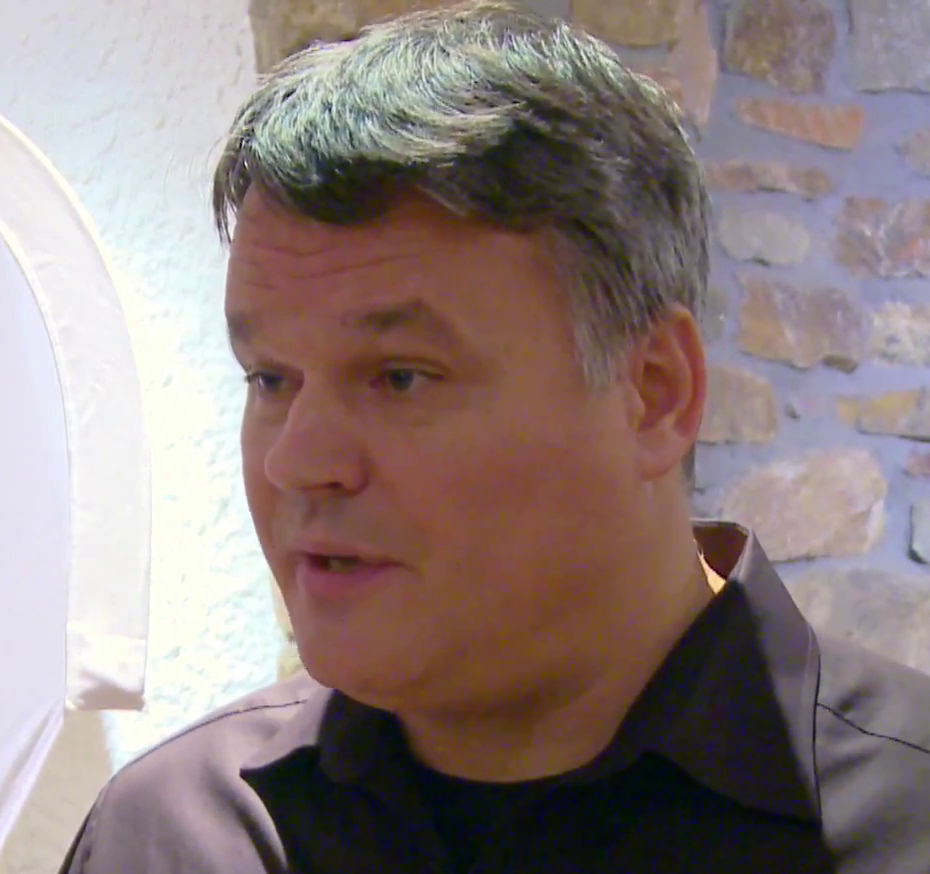Back in 2011, the virologist Stefan Lanka published a short article titled “Measles Virus: 100,000 Euros Reward! // WANTED / The Diameter” (Masern-Virus: 100.000 Euro Belohnung! // WANTED // Der Durchmesser) on the website Gesundheitliche Aufklärung. In this provocative piece, Lanka claimed “Big Pharma” lost money on flu vaccines after swine flu, which he argued led to the German government launching a fear-mongering campaign about measles to help the pharmaceutical industry recover those alleged losses.
The article continues by claiming that the measles virus does not actually exist. Lanka vaguely states that the causes of measles are well known, but he does not elaborate further. The article’s centrepiece was a provocative challenge with a clear condition:
The reward (100,000 euros) will be paid, if a scientific publication is presented, in which the existence of the measles virus is not only asserted, but also proven and in which, among other things, the diameter of measles virus is determined.
(Translated by positivists.org)
So, who exactly is Stefan Lanka, and what makes him believe his claims deserve serious consideration?
A Virologist Against Viruses (Or At Least Some of Them)

Stefan Lanka studied Biology at the University of Konstanz, specialising in marine viruses for his PhD. He supposedly isolated the first giant virus from the ocean. During this period, he developed an interest in HIV (Human Immunodeficiency Virus). After spending some time reviewing scientific articles, he became convinced that neither HIV, nor any retroviruses, actually exist. In time, Lanka extended his theories further and, with the halo of his academic resume and his command of scientific jargon, he gained a considerable following from germ-denialist and anti-vax communities.
Being a virologist and opposing the idea of viruses – at least some of them – may sound contradictory. It is barely the most surprising of Lanka’s ideas: he also claims that the evolution of ‘infection theory’ is actually connected to a web of conspiracies between France, Germany and Britain of the time, and that viruses were invented as a deliberate misinterpretation of the ancient theory of humorism.
Germ Denialism
Stefan Lanka’s approach incorporates various conspiracy theories. Challenging scientific consensus established over decades – or even centuries – requires the challenger to provide alternative explanations for why mainstream science remains dominant. Typically, this involves crafting elaborate narratives and drawing unfounded connections between unrelated events. Lanka follows this familiar path, connecting the dots between many historical events, from the Suez Crisis to the exodus of Jewish scientists from Nazi Germany. Unsurprisingly, he blames powerful industries and elites for these grand plots.
Lanka’s virus denialism also extended to the measles virus. He claims that, like many viral infections, measles can be “easily” explained by poisons, or psychosomatic factors, especially what he calls “separation trauma” (for example, when children start kindergarten). He further argues that virologists often misunderstand the very concept of viruses and that financially motivated corporations ignore this.

This kind of germ denialism is certainly a fringe idea, and it is unlikely to spread widely. Despite that, the timing of Lanka’s challenge was critical. Amid a measles crisis, the German government’s nationwide vaccination campaign drew the attention of anti-vax communities to Lanka’s challenge, even though it was published on a relatively small website.
Lanka singled out particular experts, such as Dr Annette Mankertz of the Robert Koch Institute. He claimed that if she truly cultured the measles virus as part of her research, she must therefore be able to state the exact diameter of the virus.
He had been targeting the institute in his germ denialism for some time, as the institute serves as Germany’s national public health authority, responsible for monitoring health and tackling both infectious and non‑communicable diseases. Yet, the response came from a completely unexpected person.
Round One: The Measles Case Unfolds
Weeks after Lanka’s challenge, medical student David Bardens contacted him to confirm whether it was serious. Lanka’s reply was vague, but it appeared the offer still stood. In early 2012, Bardens submitted six scientific papers as evidence for the existence of the measles virus, along with a covering note:
With the detailed compilation of literature attached I have given you both the proof of the existence of the measles virus and the required images and information on the diameter of the measles virus.
Please transfer the amount of 100,000 euros to the following account […]
I would like to thank you for the opportunity to acquire such a relatively big amount of money with such a relatively little effort.
With best regards,
David Bardens
(Translated by positivists.org)
After several weeks and a few follow‑up messages from Bardens, Stefan Lanka rejected the six papers, arguing that they were not from the Robert Koch Institute, failed to meet legal or scientific standards, and merely described normal cell functions rather than viruses. Bardens repeated his demand for the prize money via his attorney and, finally, in 2013, he filed a lawsuit in the Ravensburg Regional Court (Landgericht Ravensburg).
Proceedings began in 2014. The judge ordered an expert review of the six papers Bardens had submitted to see whether they met the challenge’s scientific criteria. Professor Andreas Podbielski, a German microbiologist and infectious-disease epidemiologist, was appointed as the expert witness. Podbielski completed his report in November 2014.
All six publications submitted by the claimant meet international scientific standards. Their combination demonstrates the existence and size of the measles virus. Thus, they fulfil the conditions of the challenge.
Lanka wrote a 58-page response to Podbielski’s expert evaluation. This response hints at Lanka’s playbook. While his headline argument was that the prize required a single publication, he also used the court as a battleground to challenge modern virology.
As in his other writings and interviews, he attempted to reframe the scientific process in pseudoscientific frameworks that served his narrative. For example, he claimed that scientific publications must comply with legal standards set by the Infection Protection Act (IfSG), and even argued that only a publication by the Robert Koch Institute (RKI) would meet those legal requirements. The court rejected this: as Podbielski noted, the scientific validity of a paper is not determined by its origin or any legal status. Lanka also repeated a common germ-denialist claim that viruses don’t meet Koch’s postulates, 19th-century criteria framed for bacterial diseases, ignoring that virology now uses updated standards.
In early 2015, the court ruled in Bardens’ favour: the challenge was binding, he had met its terms, and Lanka was ordered to pay 100,000 euros plus interest and legal costs.
The court decision made headlines in Der Spiegel, the BBC, and other outlets. Many saw it as a clear victory for science over pseudoscience. Lanka received the “The Golden Blockhead” (Goldenes Brett vorm Kopf), a satirical award from the German skeptics’ group GWUP, akin to The Skeptic’s Rusty Razor.
In the end, Lanka and his supporters took an important lesson from this, and the anti-vax movement lost significant momentum. Truth won, science prevailed, middle-age darkness lost its hopeless battle against the enlightenment!
…well, not exactly.
Round Two: Lanka Fights Back
While Bardens’ side was celebrating, Lanka’s supporters were furious. They dismissed the ruling as propaganda and called the legal process suspect. Bardens and his lawyer were subjected to antisemitic abuse; he was accused of being in the pocket of “Big Pharma” and of belonging to the Illuminati. In a later interview, Bardens explained that he had received death threats, including one saying he should be ‘killed by injection’ and another involving an AK-47. He added that, for a time, he needed personal protection to appear in public.
Lanka himself didn’t stay quiet. In the days that followed, he kept attacking Bardens’ six papers, Professor Andreas Podbielski’s expert report, and what he claimed was the court’s failure to apply the “rules” of his challenge. He published a long piece setting out what he called the “measles process”, reprising his conspiratorial history of virology and asserting that his challenge had actually proved the measles virus does not exist. He even issued a veiled warning to GWUP over its mock prize, hinting at possible criminal and civil action.
After the decision was served on Stefan Lanka, he appealed to a higher court. With the first-instance ruling still in force, the Tettnang District Court issued a warrant for his arrest for non-payment. Despite the appeal, Lanka paid 121,000 euros to Bardens.

Despite paying under pressure of enforcement, Lanka pressed on with his appeal. He raised procedural complaints, including that he had been cut short at the hearing, and that a witness from the Robert Koch Institute should have been called. The court found those points unfounded, or that they were raised too late.
Lanka also claimed the reward was not public, because it appeared in a newsletter; the court noted that, in any case, his written confirmation to Bardens in January 2012 made the offer binding. His attacks on the six papers and on Professor Podbielski did not change anything. However, the judges accepted one of his readings: that the proof had to appear in a single scientific publication. Although Podbielski told the court that modern biomedicine rarely produces a single, all-in-one paper, the court adopted a literal interpretation of the terms.
On 16 February 2016, the Higher Regional Court of Stuttgart (Oberlandesgericht Stuttgart) reversed the decision and dismissed the 100,000 euros reward. The ruling turned on a technicality rather than a scientific question, as Judge Karl-Heinz Oleschkewitz stressed that it was not about whether the measles virus exists. “It is an illusion to believe that a court can rule on that,” he said. He also appealed to the reporters in the courtroom to be careful with their headlines.
As expected, anti-vax communities did not hear the judge. Immediately after the appeal decision, Lanka presented the ruling as if his challenge had proved the measles virus does not exist. He argued that Bardens had not met the terms, that the expert report was flawed, and that the court had actually confirmed his position. Within days, he spun the ruling into a claim that measles vaccines don’t work.
Following his lead, German denialist and anti-vaccine outlets framed it as a sweeping victory over modern medicine. German New Medicine, for example, claimed the decision aligned with Ryke Geerd Hamer’s theories, even though Hamer had previously made antisemitic allegations about Lanka and accused him of legitimising virology. The further the story travelled, the further it drifted from reality: the “Higher Regional Court” became the ‘Supreme Court’, Bardens became “the medical science community”, measles dropped out of the picture, and the takeaway morphed into the sweeping falsehood – “no scientific publication to prove that viruses exist”.
For his part, David Bardens was surprised by the appeal outcome. He had expected the court to read “a scientific publication” as “at least one paper”, given Lanka’s claim that “there wasn’t even a single publication proving the measles virus or determining its diameter”. As it turned out, that narrow single-paper reading was arguably Lanka’s weakest point in the appeal, and it ended up saving him. Bardens asked the Federal Court of Justice to hear the case, but it declined. Either way, the damage was done; the reversal wouldn’t undo it.
Years on, misinformation about the measles case persists in Covid-19 denialist circles and across alternative-medicine platforms from New Zealand to the United States. Stefan Lanka continues to publish articles and give video interviews misrepresenting the court ruling and promoting HIV and Covid-19 denialism.
Conclusion
The measles case between Stefan Lanka and David Bardens leaves a mixed picture for critical thinkers. Firstly, David Bardens deserves credit. Whatever the final ruling, he put in time, money and personal energy for a piece of sceptical activism. He did so in full view, aware that some fringe communities can turn hostile when challenged. That commitment is worth acknowledging before we look at what this case can teach about effective skeptical activism.

The outcome wasn’t great. Lanka, his followers and a wider network of vaccine deniers, conspiracy circles and alternative-medicine outlets walked away with a handy piece of clickbait misinformation. Stripped of context, it has been recycled again and again.
Even so, it’s too harsh to judge the case solely on that basis. The reversal was based on a narrow technicality. Bardens had little room to manoeuvre. Even if a further appeal had been admitted and gone the other way, vaccine denialism would have found another piece of clickbait; they hardly need help.
It’s also easy to say the challenge should simply have been ignored. The case gave Lanka undeserved international attention; if he was left alone, the plea might have stayed within his own denialist circles. History suggests that prize challenges, such as the One Million Dollar Paranormal Challenge, rarely shift committed opponents. Furthermore, Lanka’s challenge turned into a trap for Bardens; the “single publication” condition was effectively impossible to satisfy. Still, saying this now risks hindsight bias since, at the time, nobody knew Bardens would lose on that technicality.
The measles case ran for about five years. In the end, it is hard to say anyone changed their mind. It swayed neither camp, and for undecided observers, it offered a confusing legal parade rather than a clear scientific resolution. As a public spectacle, it felt more like a draw than a clear result.
So, what to do the next time a conspiracy influencer throws down a challenge? Do we take it up, or leave it be?
Looking at the measles case, one lesson stands out: there’s no room to lose. These challenges should be approached with care, and the risk of backfire weighed seriously. For instance, the courtroom proved a risky venue. Science is not decided by legal technicalities, but court cases often are. Litigation is slow and costly. Court proceedings attract uncontrolled publicity, lend a false sense of equivalence, and invite punchy, misleading headlines with binary outcomes.
The measles case also shows how the denialist playbook works.
Stefan Lanka isn’t just any opponent of mainstream science; he is a trained biologist. That background lends him credibility and can make his claims harder to dismiss at first glance. He often wraps arguments in scientific jargon that sounds persuasive but collapses under expert scrutiny. He repeatedly shifts the goalposts to counter valid points (e.g. by demanding a single ‘killer’ paper). Like many denialists, he relies on the Gish gallop, flooding the audience with legal, scientific and historical half-truths to create the impression of overwhelming evidence. He builds his case on a conspiratorial scaffold in which hidden elites and shadowy plots explain away the scientific consensus, while positioning himself as the sole navigator of the real story. That scaffold is supported with irrelevant historical contexts (such as 19th-century European politics), pseudo-legal mistruths (the ‘legality’ of publications, the Infection Protection Act and the role of the RKI) and outright disinformation.
In the end, the measles trial wasn’t a win or a loss so much as it was a reminder of how messy these confrontations can get. It’s no surprise that broad scientific consensus can’t stop a story being stripped for parts and repackaged for fresh audiences. Denialist circles often sit inside echo chambers, where everyday sceptical tools don’t reach; what works in open debate rarely works in a ‘cultic milieu’. Even so, people do change their minds and some walk away from denialism. It isn’t a zero-sum game – it is still slow, patient work that moves the needle.
This piece was originally published in 2020, for the Turkish skeptic blog Yalansavar. It has been translated and expanded for publication here.



